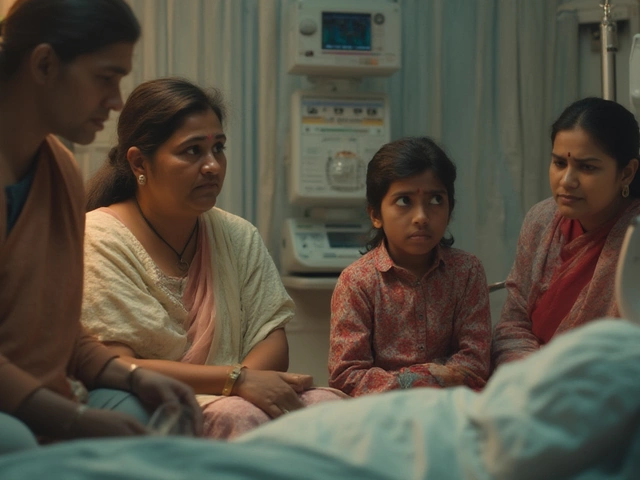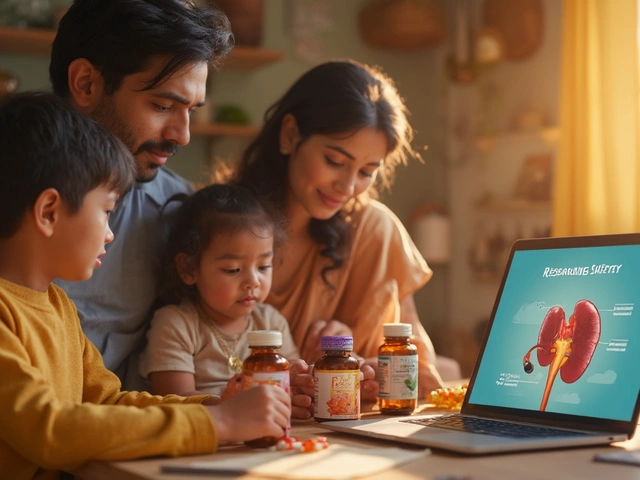Health Balance: Simple Steps to Stay Safe and Feel Great
When you hear the word "balance," you probably think of eating right, moving enough, and feeling calm. But true health balance also means knowing which medicines and supplements might harm you. On this page we bring you easy‑to‑follow advice, real‑world examples, and evidence‑based tips so you can protect yourself while enjoying everyday life.
Everyday Habits That Keep Your Body in Sync
Start with the basics: drink enough water, get 7‑8 hours of sleep, and move your body for at least 30 minutes a day. These habits alone lower the risk of many side‑effects that some drugs cause, such as kidney strain or mood swings. If you work a desk job, stand up every hour, stretch, and walk around the office. Small breaks add up and help keep your circulation and metabolism humming.
Foods matter, too. A diet rich in fresh fruits, vegetables, whole grains, and lean protein supplies the nutrients your liver needs to filter out toxins. For a quick liver boost, try the natural drinks highlighted in our article "Best Drinks to Flush Your Liver Naturally and Effectively." Lemon water, beetroot juice, and green tea each contain compounds that aid detox without harsh chemicals.
Choosing Safe Supplements and Herbal Remedies
Supplements can fill nutrition gaps, but not all are created equal. Our "Best Herbal Supplement Company in 2025" guide walks you through how to spot third‑party testing, USP verification, and transparent labeling. When you see a product that claims "miracle" results without evidence, skip it – it could hide heavy metals or undisclosed drugs.
If you prefer traditional approaches, consider Ayurvedic options like Abhyanga oil massage, explained in "Ayurvedic Massage Explained: Benefits, Techniques, and How It Works." The massage uses herbal oils that soothe muscles and improve circulation, but be sure the oils are pure and free from synthetic additives. Always read the ingredient list and choose brands that disclose sourcing.
Natural remedies such as aloe vera also have a place in a balanced health routine. Our "Miracle Plant That Heals" article breaks down when aloe gel is helpful for skin and digestion, and when it might interact with diabetes medication. Use it in moderation and talk to a pharmacist if you’re on prescription drugs.
One common confusion is eating certain fruits while taking medication. For example, "Can You Eat Bananas While Taking Metformin?" shows that bananas are safe for most metformin users, but portion size matters for blood‑sugar control. Simple rules like pairing fruit with protein can keep spikes at bay.
When you need pain relief, choose options with proven safety. Our "Most Effective Painkillers for Arthritis" review lists NSAIDs, topical gels, and newer biologics, plus tips on dosing to avoid stomach ulcers or kidney issues. Remember, the strongest drug isn’t always the best for you – it’s the one that fits your health profile.
Finally, stay informed about medication pricing and safety. The article "Why Are CVS Pharmacy Prices So High?" uncovers why some drugs cost more and offers practical ways to cut costs, like using generic versions or patient assistance programs. Paying less doesn’t mean compromising safety if you verify the source.
Balancing health isn’t a one‑time checklist; it’s a habit of asking questions, reading reliable sources, and listening to your body. Bookmark this page, explore the linked articles, and keep these practical steps handy. Your wellbeing will thank you.

80/20 Rule in Ayurveda: Unlocking Health and Balance Naturally
Explore how the 80/20 rule applies to Ayurveda, what it means for balanced health, daily routines, diet, and mindful living. Get practical tips you can use starting today.




